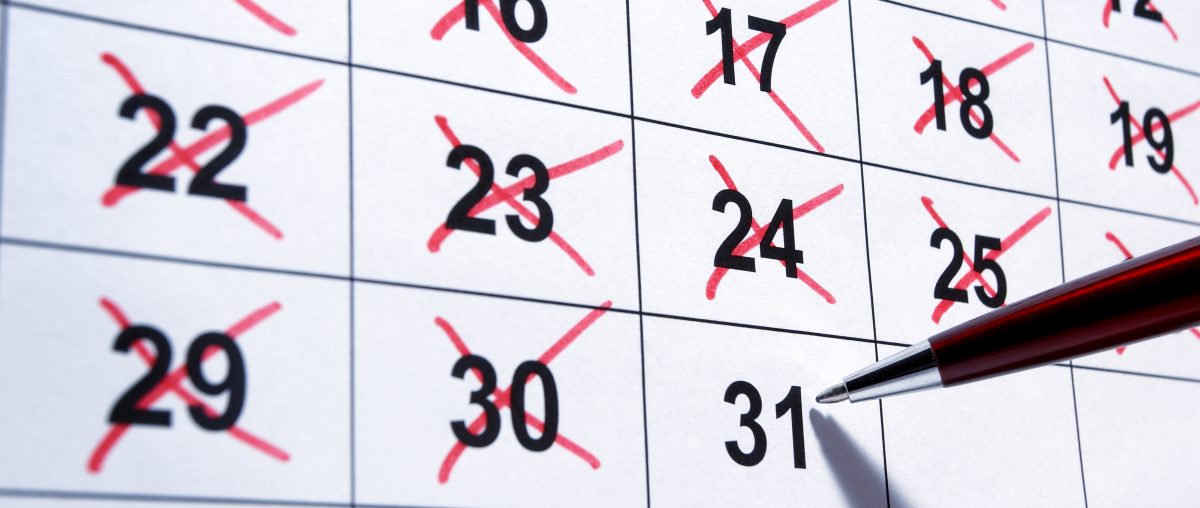About Project Management
Throughout all my years in the consulting business, I learned that Project Management is just another way of managing delays. Cold fact!
Trust me, no matter how long you have been a project manager there is no way to avoid delays from time to time. I have learned that things are going to run off from the original plan more than once. But hey, good news!
I have also learned that there is one way (maybe the only one!) to avoid never ending delays:
Setting a deadline (or a commitment very hard to change)
At this point, maybe you may ask:
A deadline? Really? No special productivity technique? Or a new efficiency app?
And I will tell you: NO, a proper deadline is not only more than enough, it is also (maybe) the only way to get things done.
Why?
Because procrastination is something inherent to almost every one of us, especially when it comes to hard or intellectual work. As Neil Fore points out on his book The Now Habit, in the western cultures we are raised to associate work with boredom or exhaustion, and so we tend to consciously or unconsciously procrastinate, especially at the very beginning of a complex (or what we think it is a complex) task.
Therefore, it’s almost a cultural thing to procrastinate. We’ve all been there: thinking about to start, knowing we should start, and not doing it. You want to know how to start? SET A DEADLINE.
Countdown
Recently the hand dryers in the bathrooms of my company were renewed. The new model has a digital counter that starts a countdown from 10 to 0 as soon as you put your hands into it.
After weeks, I realized I always take my hands out of it at just before the 0 and starting to assume that I have had the necessary time to get my hands dried – even when sometimes it wasn’t the case – and I may be leaving the bathroom with my hands almost dry or just dry enough to go ahead and continue with my day.
Curious as I am sometimes, I wonder what would happen if I left my hands in the dryer after the 0. Can you guess? Nothing! The dryer does not stop blowing hot air at the end of the countdown. The machine continues for a few more seconds after the zero (click the YouTube below).

However, this fictional countdown made me take my hands off the dryer just before the zero and made me (and many others) leave the restrooms with our hands “dry enough” and continue with our next tasks. Think about it.
If a simple hand dryer countdown could have this impact on behavior, imagine what a well manufactured and coherent deadline could impact on more critical tasks.
A deadline should work just as the hand dryer does it: to get things done within a timeframe in order to move on.
You may be thinking that it’s obvious, and it is indeed. However, reality is that many of us are not used to work under a deadline. Moreover, many of those who work under deadlines all the time do not know how to deal with it.
A deadline tends to be so hard to manage than it’s considered an enemy and not an ally. And that’s what needs to be changed.
So, what is this about?
Let me be clear here: I won’t dig deep into how to avoid PROCRASTINATION to start or how to move forward at the different stages of a project (I will do it later, I promise). Instead, I will share with you a couple of personal and non-personal examples on:
1) How to manufacture a proper deadline
2) How it has saved my life (really, at a personal and a professional level)
3) And how it will save yours
Within this week, I will tell you the secrets to set a killer deadline and the keys to managing a due date as a master.
But first things first (just to make it more interesting):
- Think about a project you have (preferably, one you have not started yet)
- Be receptive (easy)
Meanwhile, let me know any thought you have. How do you address deadlines? What do you consider to set one? How do you control deadlines?
Please share your ideas and share this article to someone you think will find it useful (there is always someone).

Diego is an experienced learning advisor, a certified trainer and a design thinking consultant.
He is available for advisory where the focus is on driving trascendental learning and lasting change. Moreover, he is always eager to chat.






